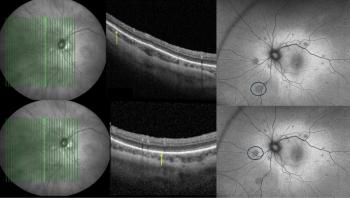
Negative correlation found between HCD and CCT
A recent study has shown that there is a negative correlation between the horizontal corneal diameter (HCD) and the central corneal thickness (CCT) in microphthalmic eyes irrespective of previous congential cataract surgery...
A recent study has shown that there is a negative correlation between the horizontal corneal diameter (HCD) and the central corneal thickness (CCT) in microphthalmic eyes irrespective of previous congential cataract surgery. This data was published in the European Journal of Ophthalmology.
The aim of the study, performed by Dr Ales Filous et al. (Department of Ophthalmology for Children and Adults, Charles University, 2nd Faculty of Medicine, Prague, Czech Republic), was to determine the CCT in microphthalmic aphakic or pseudophakic eyes in addition to eyes that had no previous surgical history. There were a total of 140 patients in the study group and they were split into three groups. Group A consisted of 32 patients that had previously undergone congenital cataract surgery and had an absolute or relative microcornea. The second group, B, included 13 patients with absolute or relative microcornea as well as another developmental anomaly of an eye without any surgical history. A control group of 124 healthy school-aged children comprised the final group. Exclusions included those with corneal oedema or scars.
Measurements of the HCD were taken with caliper and CCT were taken with an ultrasound pachymeter. It was found that the mean CCT of 48 eyes from both groups A and B was significantly higher than that of the control group. Through a regression curve the clinicians were able to demonstrate that as the HCD decreased in the microphthalmic eyes the CCT value increased.
It was determined, based on the results, that there was a negative correlation between HCT and CCT, and that in microphthalmic eyes, irrespective of surgical history, small corneas tend to have higher CCT values.
Newsletter
Get the essential updates shaping the future of pharma manufacturing and compliance—subscribe today to Pharmaceutical Technology and never miss a breakthrough.













































